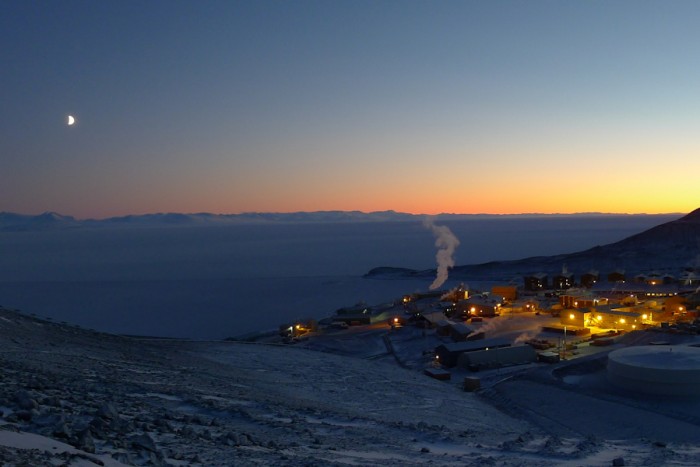
“The light is amazing, especially when the sun sets. It’s a mixture of pinks, orange, yellow, red… sometimes intense, sometimes very gentle.”
My friend Nasko Abadjiev describes his new home in an email. He’s already moved far from home once, from his native Bulgaria to Seattle 15 years ago.
Now he’s living in an even more unlikely place: Antarctica.
At the bottom of the planet, Antarctica is a world unfamiliar to most Americans. We think of vast ice shelves, extreme cold and research stations in forlorn outposts.
Yet for those who live and work there, Antarctica has a strong appeal. Before his arrival at McMurdo, the United States research station, in February, Nasko tried for five years to get a job here. He succeeded just five days before the last flight of the season.
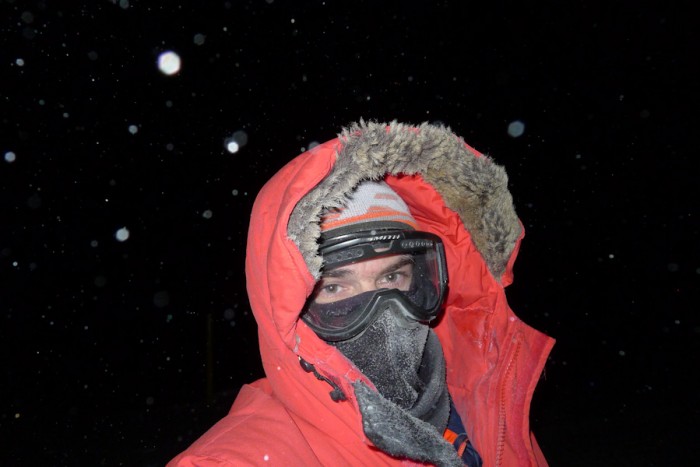
As a lifelong skier who loves big open spaces, Nasko was an ideal candidate for a job as a carpenter in the world’s southernmost continent.
For Nasko, this is a golden opportunity to learn more about the continent — its nature and geography — and to satisfy his strong connection to the place.
“There is a lot of open space and light in Antarctica,” he told me.
Except in winter, of course, when darkness reigns 24 hours a day.
The other main reason Nasko was drawn to Antarctica was the opportunity to make strong social contacts — new friends and colleagues — thanks to the slower pace of life, the many hours available for sharing cultural and outdoors experiences with others, outside of work time. In addition to the abundant skiing and hiking, McMurdo provides dozens of live concerts, films, plays, dinners, lectures and other events (even soccer!) — a rewarding lifestyle for its residents.
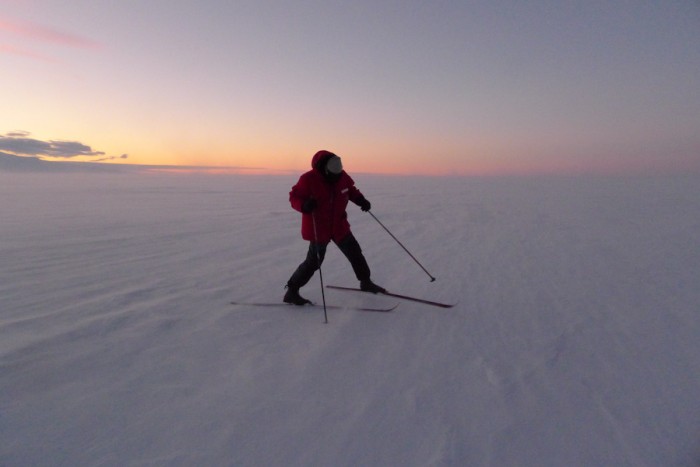
And as a small, tightly-knit community of about 1000 scientists and support staff, which dwindles to just over 150 people during the winter, McMurdo is dependent on a strong sense of cooperation. Nasko recalls that the manager of the Bulgarian research program in Antarctica used to say the connections and relations between people in Antarctica are a good example for all other countries.
“You see in Antarctica more willingness to help others, to live and solve challenges together, and — very important — how to live on Earth leaving less — or no — tracks behind,” Nasko explained.
The goal there is to avoid or eliminate the human footprint.
“McMurdo is a very good example of how we can keep nature clean and unchanged,” says Nasko “This is the spirit of the international Antarctic Treaty’s environmental protocols, and the Antarctic Conservation Act of the United States.”
Apparently, it is working.
Waste is sorted and transported from McMurdo Station to the U.S. for processing. There is a also a waste treatment plant at the station. Supplies are planned, measured and accounted for, and the system is regulated for life in extreme circumstances.
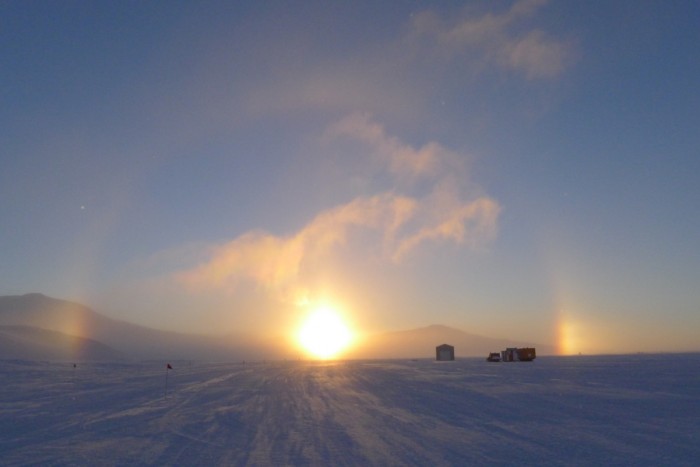
Of course, there are emotional costs to living so far from home:
“I am missing the live contact with my family and friends in Seattle and Bulgaria – my parents and my brother in Bulgaria, and my wife and [11-year-old] son in Seattle. And of course many friends,” Nasko says “I talk with them every week by phone… They are part of a large Bulgarian community in the Puget Sound region.”
“You sacrifice some personal and material stuff,” he says, “like your contacts with people who are close, in order to experience and materialize your dreams… and the balance point is a very personal and individual choice.”
Nasko will return to his family and friends in Seattle when his six-month contract expires in August (though it might be extended through October).
One of the big rewards for his lengthy sojourn is to experience life in a uniquely different place on Earth, with new friends and colleagues. For this writer (who has never been to Antarctica) it seems to hold a lot more opportunity than I had imagined.
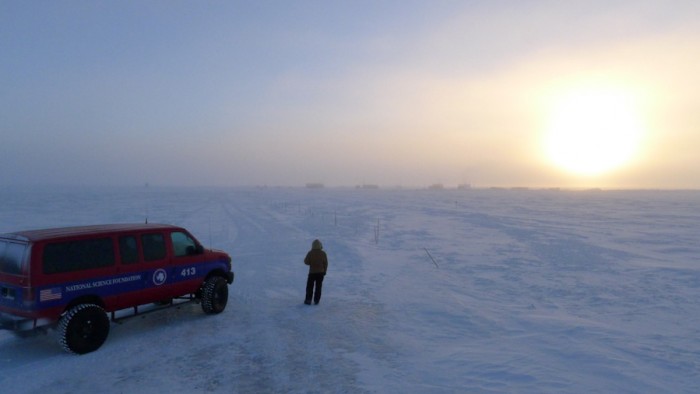
For nature lovers, wildlife is abundant in Antarctica. Nasko reported that in February and March there were seals and penguins near McMurdo — and even more at the New Zealand base 2 miles away. Also mink whales and skua birds. But they disappeared in March because the water is frozen solid, and the whales need to breathe. Nasko says he thinks the whales, seals and penguins might have moved to the north side of Ross Island, where there is open water and cracks in the ice.
Scientists are trying to determine how Antarctic animals find holes in the ice, sometimes hundreds of yards away. With sunlight disappearing, one guess is that they use the Earth’s magnetic fields.
What better place to learn about nature than Antarctica — a vast, almost entirely unspoiled wildlife habitat.
As summer comes to the Pacific Northwest, Antarctica is entering a period when the sun is never seen:
“The last month the light is less and less, and in the last two days is almost 100% gone. It was disappearing very slow (colors and intensity wise), so our senses can adapt… but I’ve seen amazing colors and sunsets in the last 30 days.”
And though it’s dark, there’s plenty of chess, ping pong, billiards, movies, live concerts and plays to keep folks busy during the long, cold nights. One can sit and read a book, or enjoy all of these activities.
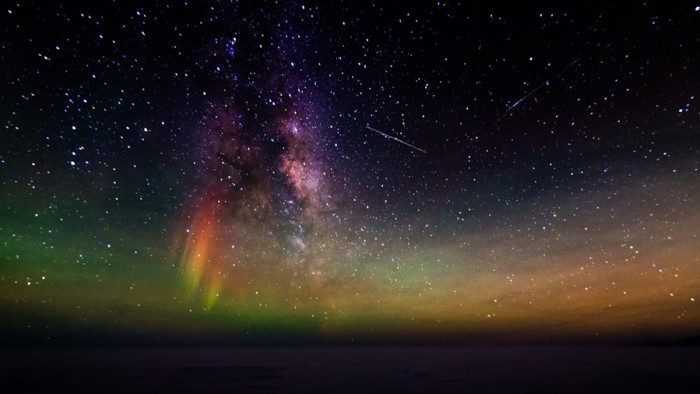
Or one can venture outdoors — at 75 below zero — and gaze at distant galaxies through the clearest air on Earth.
So the residents of McMurdo Station don’t seem to mind the endless darkness — a normal part of nature at the bottom of the Earth.


magnificent points altogether, you simply gained a new reader.
What may you suggest about your submit that you made a few days in the past?
Any positive?
1734499096894392fb4d12780dbf298f
Reading the article makes me feel that the Antarctica is
another beautiful place to be experienced. Less forbidding and desolate as most descriptions of it that I have read. Good article, good writing, please keep these articles coming!
Well presented Mr. Segal,
Feeling like you brought Antarctica to my next door.
Thank you for a beautiful piece.
Serenity permeates this variegated exposition of life in an unspoiled and exquisite land of quiet beauty…what a lovely way to reconnect with you, Art…Thank you.
A beautiful description of Antarctica. It’s encouraging to know that despite all the hardship, people there are making the most out of their lives.